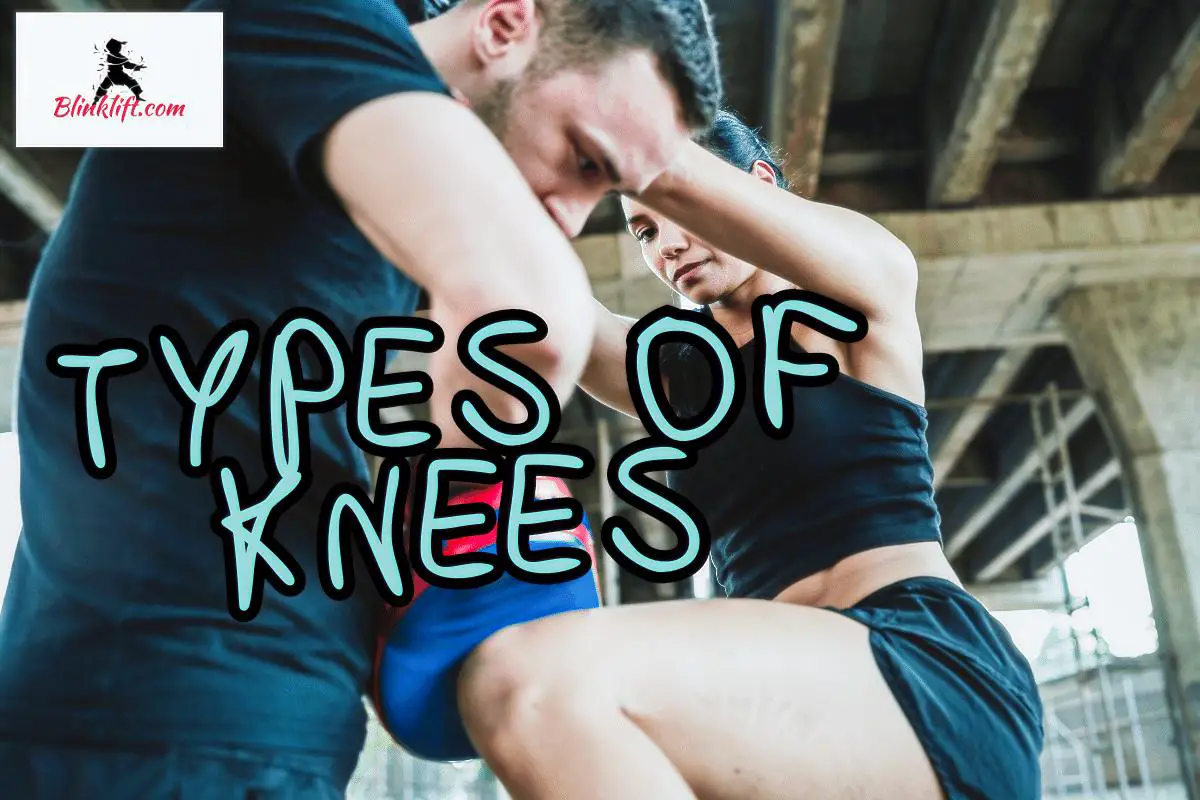Knees are one of the most effective fighting techniques in Muay Thai. However, there’s a problem; many fighters aren’t familiar with the different types, so they end up not having a solid knee game. This is why I’ve decided to write this article: to solve this issue for you.
There are various knees in Muay Thai, and you want to familiarize yourself and get comfortable with as many as possible. There’s a fighting style underneath Muay Thai called Muay Khao (The Knee Expert.) This type of fighter is best at using knees to beat his opponents. So if there’s an entire Muay Thai style built on different knee strikes, you have more to learn.
What we’ll do in this article is review the five best knee strikes in Muay Thai. We’ll kick this article off with the one you probably know and delve into more advanced and less popular strikes, which are not less effective.
I hope you’re ready and excited to learn, as we’re about to dive into a journey that’ll get you incredibly comfortable with the wonderful world of knee strikes. Without further introduction, let’s dive in!
#1 – Straight Knee
The first type of strike is the straight knee, which is the classic one you’re most likely familiar with. This is the one you want to learn first, as it’s the simplest one that will provide the widest basis when you learn all the other strikes.
The straight knee involves driving the knee straight forward, aiming to hit the opponent’s midsection or thigh. It’s an effective long-range technique used to keep opponents at bay and disrupt their rhythm.
You first want to enter your fighting stance, which has to be flawless. If it’s not flawless, you won’t be able to throw the knee as effectively, which you definitely want to ensure you do. Once your fighting stance is good enough, you can advance into throwing the strike itself.
You can throw either the regular or the switch straight knee, depending on which side you want to hit. The first step is to swing your arm down for momentum, of the same side. So if you’re throwing a right knee, you want to swing your right arm down—and the other way around.
The target you want to hit is the midsection, as this is more of a long-range attack, which you want to throw whenever you get close to your opponent, which is similar to when you throw an elbow strike. While this is the longest-range knee strike out there, it’s still a close-range weapon compared to the basic punches, such as the jab, cross, and overhand punch.
#2 – Diagonal Knee (Kao Loi)
The second type of knee strike we’ll review is the diagonal knee. Similar to the diagonal kick, you throw it at a 45-degree angle. Where do you think the best target for this strike will be? That’s precisely right, the side of the body and the side of the head.
It’s best used in close-quarters scenarios, where the distance between you and your opponent is minimal. The best situation to use the diagonal knee in is in the clinch, as that’s when you can throw knees and elbows without having to worry about range.
The diagonal knee involves bringing the knee up and across the body at a 45-degree angle. It’s often used in close-range situations, targeting the opponent’s ribs, liver, or head.
This is the second most popular variation of the knee strike, which might make you more eager to learn to use it properly. Anyways, the diagonal knee is best used in close-range situations, typically the clinch. You’ll be able to cause tons of damage if you land it properly.
If you want to read about common mistakes when throwing a knee strike in Muay Thai and how to fix them, follow this link. This article will help you perfect your knees.
#3 – Curving Knee (Kao Loi Grad)
The third type of strike we’ll review is the curving knee, aka circular knee strike. This is, once again, best used in close-range situations, allowing you to throw as many knees and elbows without having to worry about the distance.
The curving knee is similar to the diagonal knee, but it follows a more circular path. It’s used to strike opponents who are moving laterally or for targeting the head or ribs.
While the diagonal knee follows a straight path at a 45-degree angle, this one follows a circular path until you hit the opponent. That’s why your opponent might not expect this strike to come, as it’ll be more difficult to defend against—because it comes in a circular motion.
You have two options when executing this strike. The first is to have your leg laterally as it usually is, which has its benefits. The second option you have is to have it horizontally, hence flip your leg 90 degrees until it’s parallel to the floor. I want you to play around with both options and experience the benefits of each one. This will make you control the knee strikes to a better degree, which many fighters seem to overlook.

#4 – Jumping Knee (Kao Dode)
The jumping knee is a powerful knee strike performed by leaping off the back foot and driving the knee upwards. It’s useful for attacking taller opponents or delivering a high-impact strike.
The jumping knee is one of the most important advanced strikes to learn. Every type of strike has a jumping and a spinning variation. These variations deliver more force and thus inflict more damage, as you’re generating force through acceleration (physics!)
Before you learn this advanced jumping variation, however, I want you to get comfortable with using the straight, curved, and diagonal variations. These will teach you the basics of throwing a proper knee, which then will lead you perfectly to the jumping knee.
To execute it, you want to start in your regular fighting stance. Then, you want to leap using both your legs (to generate more force) and throw your kicking knee to your target. What’s so beautiful about this move is that you can choose to hit anywhere on the body, including the head.
Here’s a video that demonstrates how you can throw the perfect jumping knee. They explain it in a way that almost everyone can understand, so make sure to watch it as many times as you need!
#5 – Step-Up Knee (Kao Tone)
The last type of strike we’ll review is the step-up, aka step-in knee. This one is simpler to understand since it’s the same as the first one in terms of the nuances. However, it’s different because you’ll be stepping into your opponent before you throw the knee, which is critical here.
The step-up knee involves stepping forward with one leg while driving the knee of the other leg into the target. It’s a good technique for closing the distance and delivering a strong knee strike.
People who love using knees must learn this one because it’s such a suitable technique for closing the distance and hitting the knee although it’s typically a close-range weapon.
The step also allows you to generate more force, which will allow you to inflict more damage on your opponent. You’ll be mostly targeting your opponent’s body, although you can also hit his head if he messes up his defense or guard.
Anyways, the step-in knee strike is the same as the first one with a step involved. You want to maintain all the small details we’ve discussed in the regular strike, such as using your hips and following through with the strike.
Make sure to learn this variant if you haven’t already!

How to Throw Powerful Knees
And now, for the last part of this article, let’s dive into 10 tips that’ll help you throw more powerful knee strikes. These mostly apply to all the variations we’ve reviewed in this article, which makes these tips much more important to understand. So without further ado, here are 10 tips that’ll boost your knee power and make you a better Muay Thai disciple.
- Stance and Balance: Maintain a solid Muay Thai stance with your feet shoulder-width apart and your weight evenly distributed. Keep your core engaged to maintain balance throughout the movement.
- Hip Rotation: The power in a Muay Thai knee comes from hip rotation. When throwing a knee strike, pivot on the ball of your support foot and rotate your hips forward to generate maximum force.
- Clinching: In Muay Thai, clinching is a crucial aspect of knee strikes. Learn how to effectively control your opponent’s neck and arms in the clinch to set up powerful knee strikes from close range.
- Targeting: Aim for the midsection (body) or head of your opponent. The body knee is a great way to wear down your opponent, while a well-timed knee to the head can be a fight-ending technique.
- Timing: Timing is crucial for powerful knee strikes. Wait for the right moment, such as when your opponent moves forward or throws a strike, to capitalize on their momentum and deliver a powerful knee.
- Distance Management: Understand the appropriate distance for throwing knees. If you’re too far away, your knee strike will lack power, and if you’re too close, you might not get enough leverage.
- Knee Positioning: When throwing a knee strike, raise the knee upward with your shin parallel to the ground. This positioning helps to maximize impact and reduce the risk of injuring yourself.
- Pushing off the Support Leg: As you drive your knee forward, push off the ground with your support leg. This will add more force to the knee strike and help you close the distance quickly.
- Engage Core Muscles: Strong core muscles are essential for generating power in your knee strikes. Incorporate core-strengthening exercises into your training routine to enhance your knee strike technique.
- Training with Resistance: Use resistance bands or weighted exercises to train your knees with added resistance. This will help build strength and explosiveness in your knee strikes.
Implement all the tips here to skyrocket your power.
Final Words
What we’ve discussed in this article is critical to learn and understand. You want to become comfortable with using all the variations we’ve reviewed in our list because these will make you a much more dynamic fighter, capable of attacking from different angles and creating openings using everything we’ve learned thus far.
I have plenty of other guides on my website, which you definitely want to learn if you’re interested in Muay Thai and becoming a better fighter through learning. For example, I wrote another article on Muay Thai’s most effective defensive moves you MUST know to call yourself a good fighter.
Additionally, here are other articles you’ll benefit from reading:
The 7 Best Muay Thai Conditioning Exercises (Fight-Preparation)
10 Ways to Increase Elbow Power in Muay Thai (Sharpen Elbows)
Elbow Techniques in Muay Thai – The 5 Best Ones You Must Know
How to Kick Higher in Muay Thai (5 Drills + Tips)
How to Counter Effectively in Muay Thai – The 7 Best Ways
The 10 Best Strength Exercises for Muay Thai – Increase Power!


